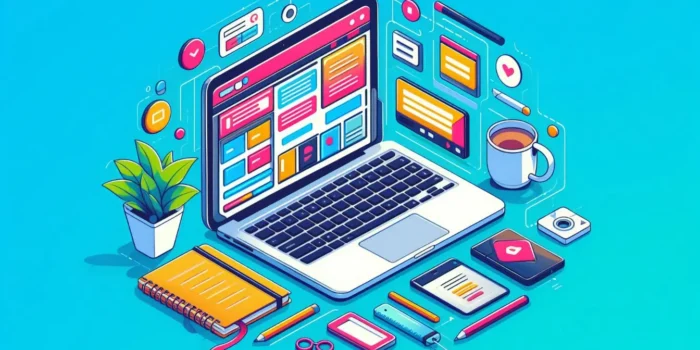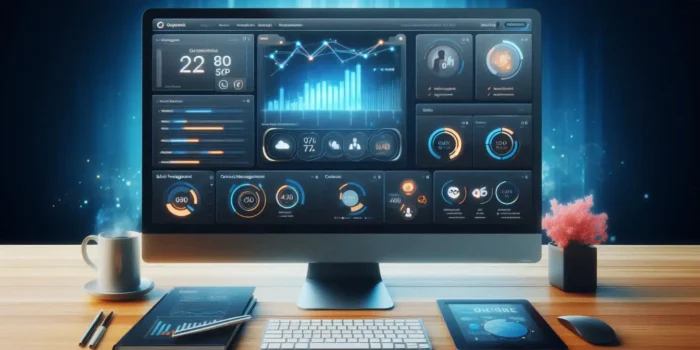Whether you’re a business planning on building personal finance or a developer tasked with making lives easier, the development of a personal finance app could be intricate and difficult to navigate. But don’t fret, you’ve landed in the right spot. In this blog post, we’ll delve into the world of personal finance apps, providing you with a comprehensive guide to developing your own.
Personal finance apps serve as a lifeline in the complex world of financial management, offering users a seamless and efficient way to navigate their monetary affairs. Let’s dive in and understand the process of creating a successful personal finance app.
A Bird’s Eye View on Personal Finance Apps
Before we delve into the intricacies of developing a personal finance app, let’s take a moment to understand what these apps are and the pivotal role they play in our financial lives.
- What is a Personal Finance App
In simple words, a personal finance app is a software application designed to help people manage their finances. These apps can be installed on smartphones, tablets, or computers, providing users with a convenient platform to track their income, expenses, savings, investments, and financial goals.
- Role and Functions of a Personal Finance App
The primary role of a personal finance app is to simplify financial management. Here are some of the key functions these apps typically serve:
Expense Tracking: These apps allow users to record and categorize their daily expenses, providing a clear picture of where their money is going.
Budgeting: Users can set monthly or weekly budgets for different categories, helping them control their spending and save more effectively.
Bill Reminders: To avoid late payment fees, these apps also offer functionalities to send reminders for upcoming bills.
Investment Tracking: For those who invest, these apps can track the performance of their investments in real-time.
Financial Goals: They allow users to keep close tabs on their financial goals, such as saving for a vacation or paying off debt.
- Types of Personal Finance Apps: Simple vs Complex
Personal finance apps can be broadly categorized into two types: simple and complex.
Simple Personal Finance Apps: These apps focus on basic financial management tasks, such as tracking expenses, creating budgets, and setting up bill reminders. They are perfect for people who want a simple and straightforward tool to manage their daily finances. An example of a simple personal finance app is Mint.
Complex Personal Finance Apps: These apps offer rather advanced features, such as investment tracking, financial planning, and even robo-advising services. They cater to individuals who have a diverse financial portfolio and need a comprehensive tool to manage their finances. Personal Capital is one such finance app.
Pre-Development Considerations for Personal Finance Apps
Before we dive into the development process, there are a few crucial considerations to keep in mind:
- Defining the Target Audience
When developing a personal finance app, identifying your target audience is the first step. Are you catering to young professionals, seasoned investors, or college students just learning to manage their finances? Understanding your audience’s needs, financial habits, and tech-savviness is important to determine your app’s features and design.
- Conducting Competitor Research
The next stage is conducting thorough competitor research. What features do they offer? Where do they excel, and where do they fall short? This research can provide valuable insights and help you carve out a unique space in the market.
- Defining the Purpose of the App
Lastly, you must clarify your app’s purpose. Is it to help users track expenses, manage investments, or plan for retirement or something else? A crystal clear objective will not only guide your development process but also help communicate your app’s value to potential users.
App Development Process – A Step-By-Step Approach
Here’s a comprehensive analysis of the basic app development process when developing a personal finance app:
- Defining App Features
Now that you have a grip on the basics, the first thing to do is defining the features your app will offer. This involves a deep understanding of your target audience’s needs and expectations. For instance, a personal finance app could include features like expense tracking, budgeting tools, investment monitoring, and financial goal setting. According to a study by Clutch, the most desired features in mobile apps are related to personalization and convenience.
- Selecting a Tech Stack
The next step is to choose the right tech stack for your app. This decision should be based on several factors, including the platform (iOS, Android, or cross-platform), the complexity of the app, and the skill set of your development team. For instance, if you’re developing an Android app, you might choose Java or Kotlin. On the other hand, for an iOS app, Swift or Objective-C might be more suitable. According to a survey by Statista, JavaScript, HTML/CSS, and SQL are among the most popular technologies used by developers worldwide for developing a personal finance app.
- Designing the Best UI/UX
A user-friendly design is paramount for the success of your personal finance app, period. The interface should be intuitive, and the user experience should make financial management easy and seamless. A study by Forbes says that a well-designed user interface can increase your website’s conversion rate by up to 200%, and a better UX design can yield conversion rates up to 400%.
- App Development and Testing
Once the design is finalized, the development process begins. This involves coding the app, integrating the features, and conducting thorough testing on all stages to ensure everything works seamlessly. According to a report by the World Quality Report, organizations globally are now spending about a quarter of their IT budgets on quality assurance and testing.
- And Now Comes The Launch
After rigorous testing, it’s finally time to launch your app. This exciting venture involves submitting your app to the App Store or Google Play Store, creating a detailed launch plan, and promoting it to your target audience through various means. Google confirms that a well-planned app launch is crucial for the initial growth of the app.
- Maintenance and Updates
Post-launch, regular maintenance and updates are necessary to fix bugs, improve performance, and add new features based on user feedback. This ongoing process helps keep your app relevant and valuable to its users.
Cost of Developing a Personal Finance App
Developing a personal finance app is a complex process that involves various factors that can significantly influence its overall cost. The cost can range from a few thousand dollars for a basic app to hundreds of thousands of dollars for a more sophisticated one with advanced functionalities and an array of benefits.
Factors Affecting the Cost
Set of Core Features: The more features an app has, the more expensive it will be. However, there are some core features that are essential for a successful personal finance app, such as account aggregation, real-time spending, credit utilization, and investments1.
Registration and Onboarding: Applications with a higher ease-of-use typically have a great chance to succeed. Therefore, intuitive registration and onboarding processes are two very important considerations when developing a personal finance app. However, finance applications usually require lots of data to verify, starting from simple verification of a client’s bank account. All of this can have a varying impact on the costing.
Type of App: The cost also depends on the type of app you’re building. Native apps (developed specifically for one platform) are generally more expensive than cross-platform apps (that work on multiple platforms).
Complexity of Features: The complexity of the features also plays a significant role in determining the cost. Features like API integrations, machine learning, geolocation, and IoT functionality can significantly impact the cost of the app.
App Development Team: The cost can also vary depending on whether you’re using an in-house team or outsourcing the development. Outsourcing can often be a more cost-effective option, especially if you’re a small business or startup.
Maintenance: Post-launch maintenance costs such as server costs, bug fixing, OS upgrades, etc., should also be factored into the overall cost associated with the app.
Wrapping Up
In conclusion, creating a personal finance app can be a rewarding venture if done right. These apps make financial management a breeze, leading to better monetary decisions and financial freedom for users. Whether it’s a simple expense tracker or a comprehensive financial tool, understanding your users’ needs and delivering an easy-to-use, secure app is key.
If you’re considering developing a personal finance app, the team at Segwitz can be your perfect technology partner. With our expertise in app development and a thorough understanding of the finance sector, we can help bring your business vision to life. Ready to take the first step towards creating a stellar personal finance app? Contact Segwitz today.
Also, don’t forget to read our other interesting blogs like “The Shift to a Decentralized Web” and “Quantum Computing and Its Implication.”





 Booking System
Booking System eCommerce
eCommerce On-Demand Services
On-Demand Services Community App
Community App Ordering App
Ordering App Loyalty App
Loyalty App Online Learning
Online Learning Directory
Directory Marketplace
Marketplace SaaS
SaaS P2P Platform
P2P Platform eHailing
eHailing Healthcare
Healthcare Finance
Finance Logistics
Logistics Education
Education Food & Beverage
Food & Beverage Retail
Retail FMCG
FMCG Sports
Sports Travelling
Travelling Manufacturing
Manufacturing Renewable Energy
Renewable Energy Mobile Application Development
Mobile Application Development Web Application Development
Web Application Development Source Code Review
Source Code Review Internet of Things (IoT)
Internet of Things (IoT) Cyber Security
Cyber Security